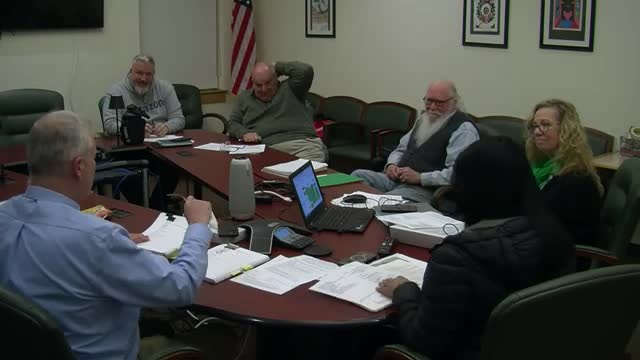Hampden‑Wilbraham presents Innovation Pathway proposal focused on health care and social assistance; state decision due in April
January 15, 2025 | Hampden-Wilbraham Regional School District, School Boards, Massachusetts
This article was created by AI summarizing key points discussed. AI makes mistakes, so for full details and context, please refer to the video of the full meeting. Please report any errors so we can fix them. Report an error »

District staff presented a substantially complete Innovation Pathway application aimed at creating a health care and social assistance career pathway for middle and high school students and outlined next steps for state review and local implementation.
The presentation described pathway sequencing from grade 7 through grade 12: exploratory courses in grades 7–8, progressively more specialized courses in grades 9–11, and by grade 12 a three‑course load plus an internship. The pathway will require students to meet MassCore and enhanced graduation requirements, including two years of the same world language. Staff emphasized that pathway students must still meet regular graduation requirements and that the program is designed to expand, not narrow, students’ postsecondary options.
Staff said the application is near ready for the February 6 submission deadline and that the state will make a designation decision in early April. If approved, the pathway would begin enrolling students for the following fall. The packet includes proposed industry partners, higher education partners and draft recruitment materials; staff said they still need additional memoranda of agreement from industry and higher‑education partners to finalize the application.
Enrollment and delivery: staff described flexible delivery models to accommodate college‑level courses (transportation to college campuses, professors teaching in district classrooms, or remote/asynchronous instruction). District transportation would be used where appropriate. Staff estimated roughly 40 students in year one and close to 100 in year two but said they would run the program at smaller or larger scales depending on demand.
Staff addressed equity and access in recruitment and said supports would be provided so the pathway does not skew toward a narrow student population. Professional development needs were expected to focus primarily on preparing staff for younger students taking some pathway courses; staff noted schedules and staffing capacity would need to be managed and some college coursework may be delivered by outside partners.
Next steps: finalize memoranda of agreement with industry and higher education partners, make targeted edits over the next two weeks, submit the application by the February 6 deadline, and await DESE’s decision in early April. If approved, the pathway would begin enrolling students for the next school year.
The presentation described pathway sequencing from grade 7 through grade 12: exploratory courses in grades 7–8, progressively more specialized courses in grades 9–11, and by grade 12 a three‑course load plus an internship. The pathway will require students to meet MassCore and enhanced graduation requirements, including two years of the same world language. Staff emphasized that pathway students must still meet regular graduation requirements and that the program is designed to expand, not narrow, students’ postsecondary options.
Staff said the application is near ready for the February 6 submission deadline and that the state will make a designation decision in early April. If approved, the pathway would begin enrolling students for the following fall. The packet includes proposed industry partners, higher education partners and draft recruitment materials; staff said they still need additional memoranda of agreement from industry and higher‑education partners to finalize the application.
Enrollment and delivery: staff described flexible delivery models to accommodate college‑level courses (transportation to college campuses, professors teaching in district classrooms, or remote/asynchronous instruction). District transportation would be used where appropriate. Staff estimated roughly 40 students in year one and close to 100 in year two but said they would run the program at smaller or larger scales depending on demand.
Staff addressed equity and access in recruitment and said supports would be provided so the pathway does not skew toward a narrow student population. Professional development needs were expected to focus primarily on preparing staff for younger students taking some pathway courses; staff noted schedules and staffing capacity would need to be managed and some college coursework may be delivered by outside partners.
Next steps: finalize memoranda of agreement with industry and higher education partners, make targeted edits over the next two weeks, submit the application by the February 6 deadline, and await DESE’s decision in early April. If approved, the pathway would begin enrolling students for the next school year.
View full meeting
This article is based on a recent meeting—watch the full video and explore the complete transcript for deeper insights into the discussion.
View full meeting
